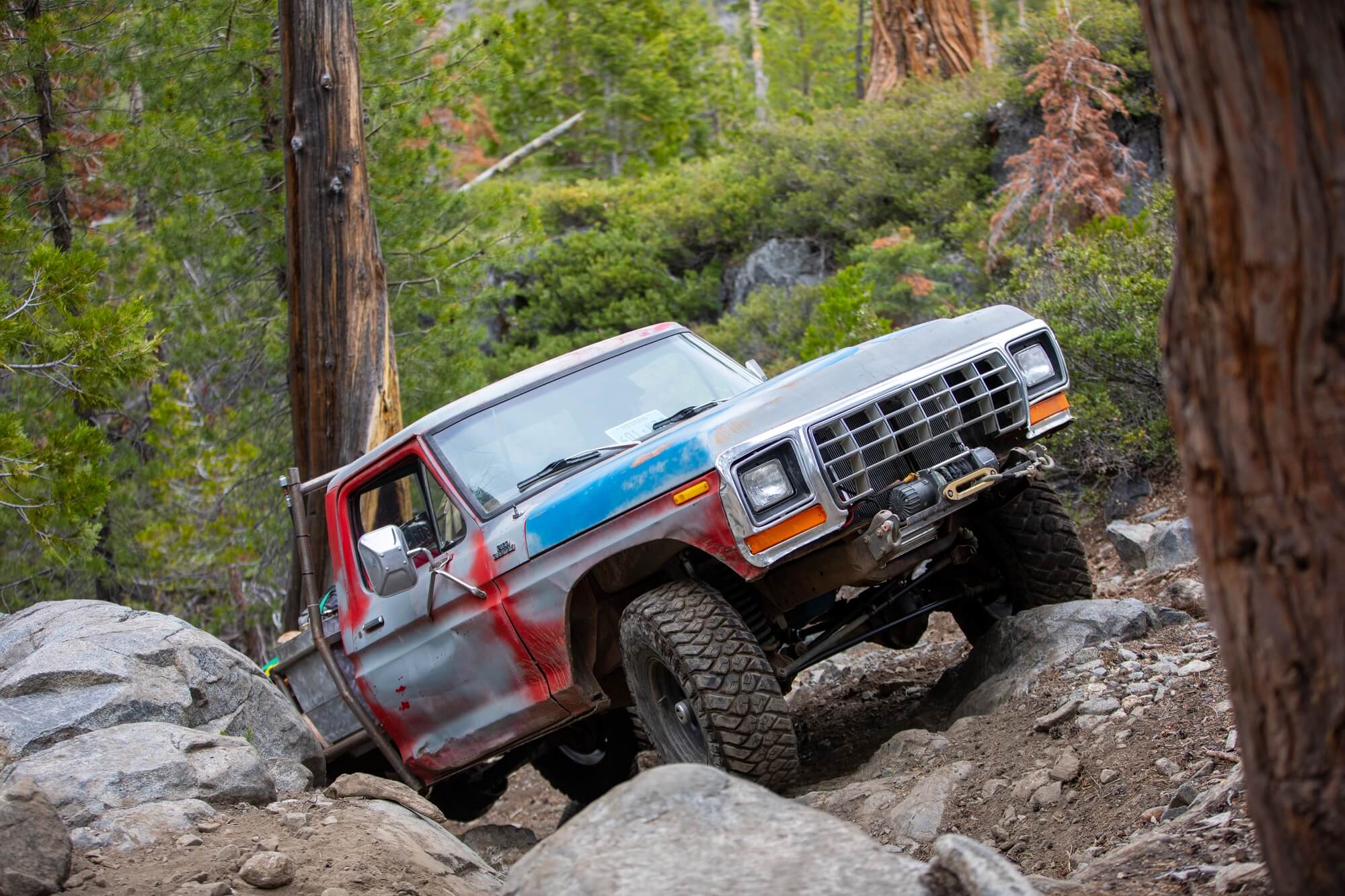
Photography by Harry Wagner
Decades ago, the mighty Ford Bronco was a standard sight on the trail, along with Jeep CJs and Toyota Land Cruisers. These vehicles were the first of their kind to offer coil sprung front ends, optional V8 engines, and the legendary Ford 9” rear end. The first generation (1966-1977) “Early Broncos” have become so valuable in the last few years that you rarely see them on the trail anymore. By contrast, Ford F-150 pickups of this era, the 73-79 “Dentside” trucks, use many of the same parts as the Broncos and they can be purchased for a fraction of the price.
That is what led Travis Ball to build his 1979 F-150. “I actually have an Early Bronco back in Salmon, Idaho,” Travis explained. “It is so rotted away though that it would cost a small fortune to get it back on the road, much less capable off-road. And then I would be afraid to dent it!” Unlike the Early Bronco, which was only offered with a 170ci or 200ci six cylinder or 302 V8, these Dentside F-150s were available with a variety of engines over the years, ranging from the 300ci inline six cylinder, 302 V8, 351M, 360ci or 390ci FE engine, 400ci V8, or 460ci V8. Travis’ truck actually had a 351 Cleveland swapped in when he got the truck in 2014, but he since converted it to the indestructible 300ci engine that makes plenty of low-end torque for crawling on the trail. He topped the engine with a Motorcraft 2100 carb that has been tweaked by his friend Brennan Metcalf to work at any angle. Why swap out a V8 for an inline six cylinder? “These engines run cool and you only have to deal with exhaust clearance on one side of the frame,” Travis explained.
The Dentside F-150s share the Bronco’s suspension, with coils and radius arms up front and leaf springs in the rear. The radius arms can bind off-road and don’t provide as much articulation as a four link or three link suspension, but the are very stable, even without the use of a sway bar. Axles on the Dentsides are similar to the Early Bronco, but more desirable. The F150 axles are seven inches wider (65.5-inches versus 58.5 inches), allowing full steering lock without hitting the radius arms and keeping the tires out far enough to preserve the body. The 1966-1970 Ford Bronco came with a Dana 30 front axle, and the 1971-1977 Ford Bronco came with a low pinion Dana 44 with 260x u-joints. Disc brakes were not introduced on the Bronco or the F150 until 1976, but the F150 used a stronger high pinion front differential and larger 297x u-joints. While both the Bronco and the F-150 use a 9-inch rear axle, the F-150 came with 31-spline axle shafts (instead of 28-spline) and “big bearing” housing ends.
The stout factory driveline allowed Travis to make minimal upgrades to his F150 before it was ready to tackle trails like the Rubicon, where we shot these photos. Now if only the body on the F150 was as narrow as the Bronco! Travis is slowly getting his “Dentside” narrower though, one dent at a time.
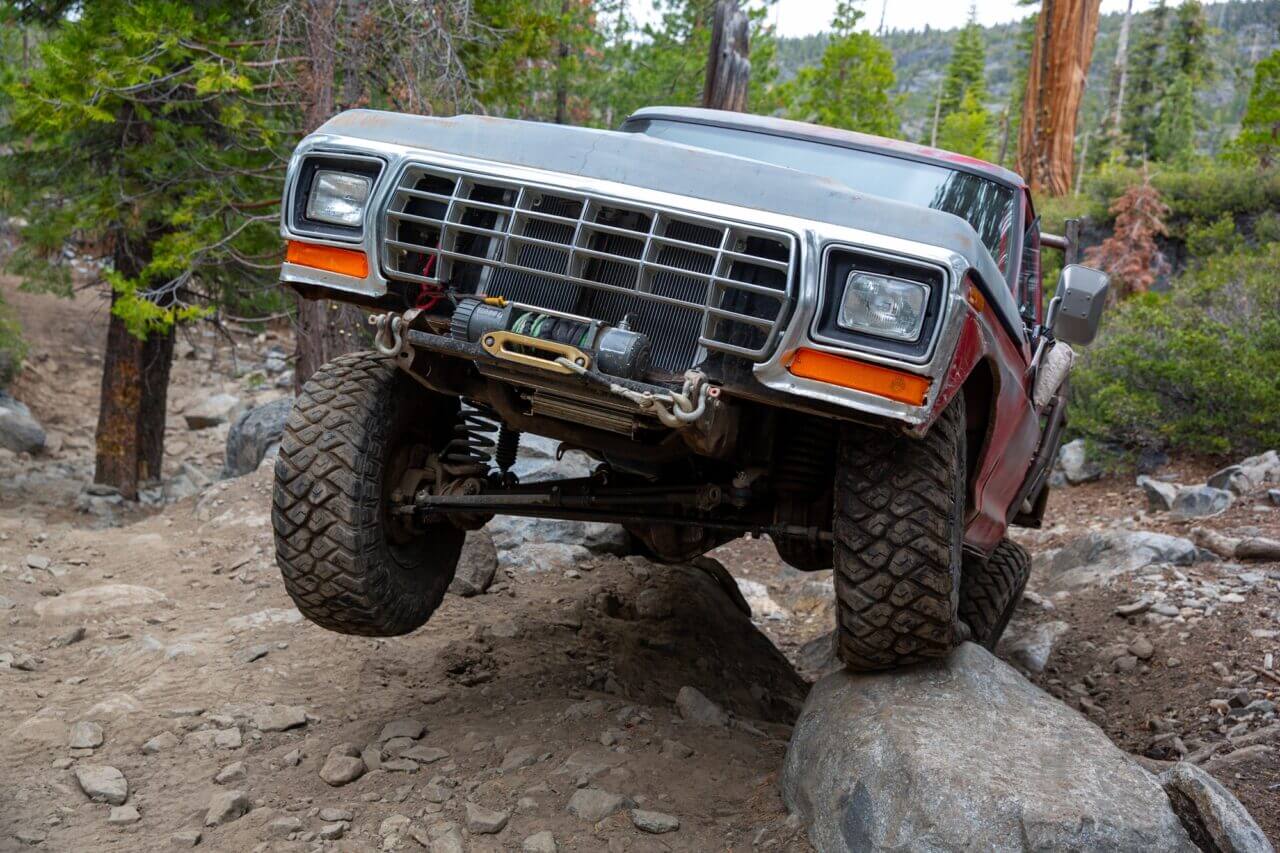
The original front axle is a high pinion Dana 44 with disc brakes, which was retained. The axle was upgraded with 5.38 gears, a lunchbox locker, and chromoly axle shafts. The axle is located by factory radius arms and 2-inch lift coils with Bilstein shocks on Ford Super Duty shock towers.

The original bed was replaced by a custom tube bed that eliminates concerns about smashing bedsides. Travis and Brennan Metcalf built the bed out of 2×2 box tubing and a mix of 2-inch and 1.5-inch tube. The bed has enough room behind the custom built Jim Gourley 32-gallon fuel cell and full size spare tire for a cooler, totes full of camping gear, spare parts, and tools. Similar to a stepside, the sides of the bed have wheel wells skinned with sheet metal to allow the 37-inch Maxxis tires to fit with minimal lift.
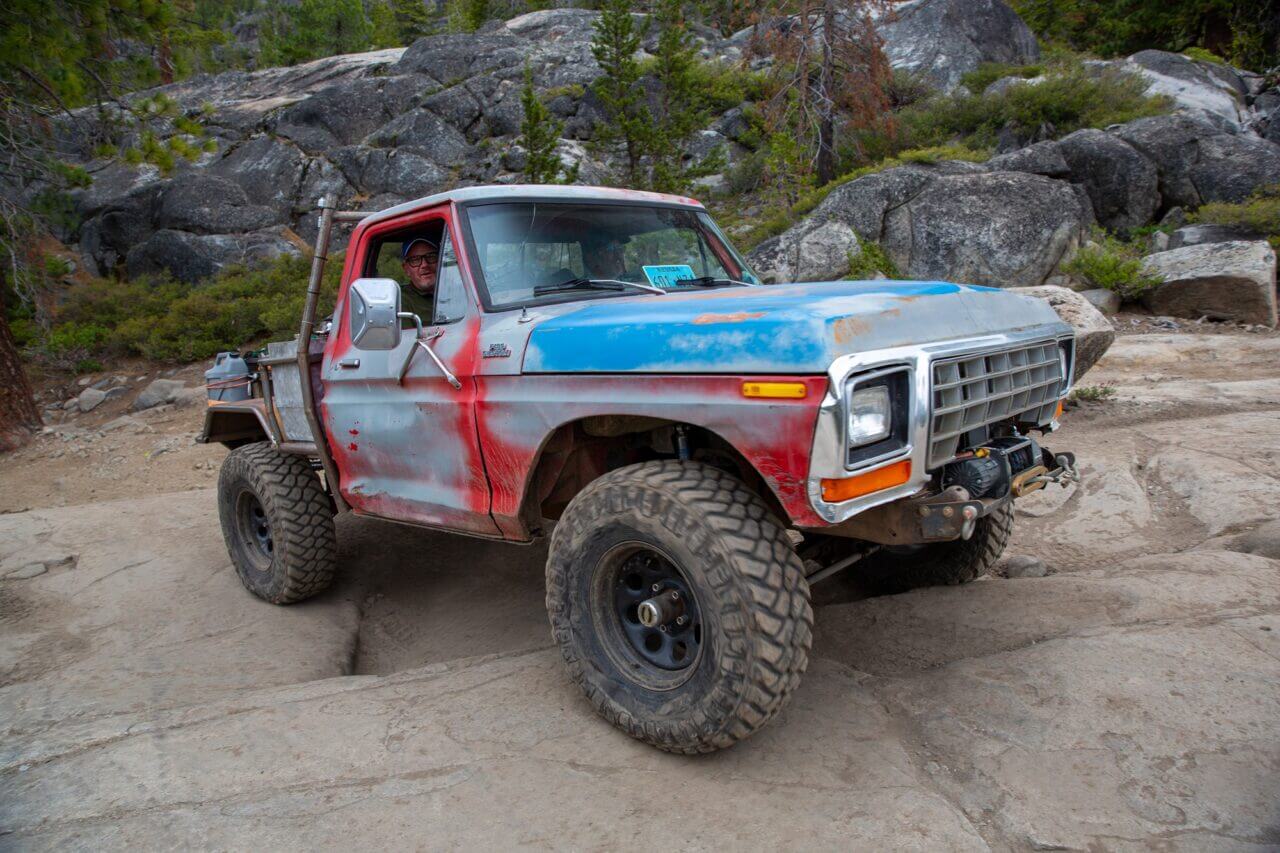
Rolling stock consists of 37-inch Maxxis RAZR M/T tires on Pro Comp 97 Series Rock Crawler steel wheels. 40s and beadlocks would be great but this combination fits the theme of providing a lot of bang for the buck and works great on both the street and the trail without overtaxing the drivetrain.
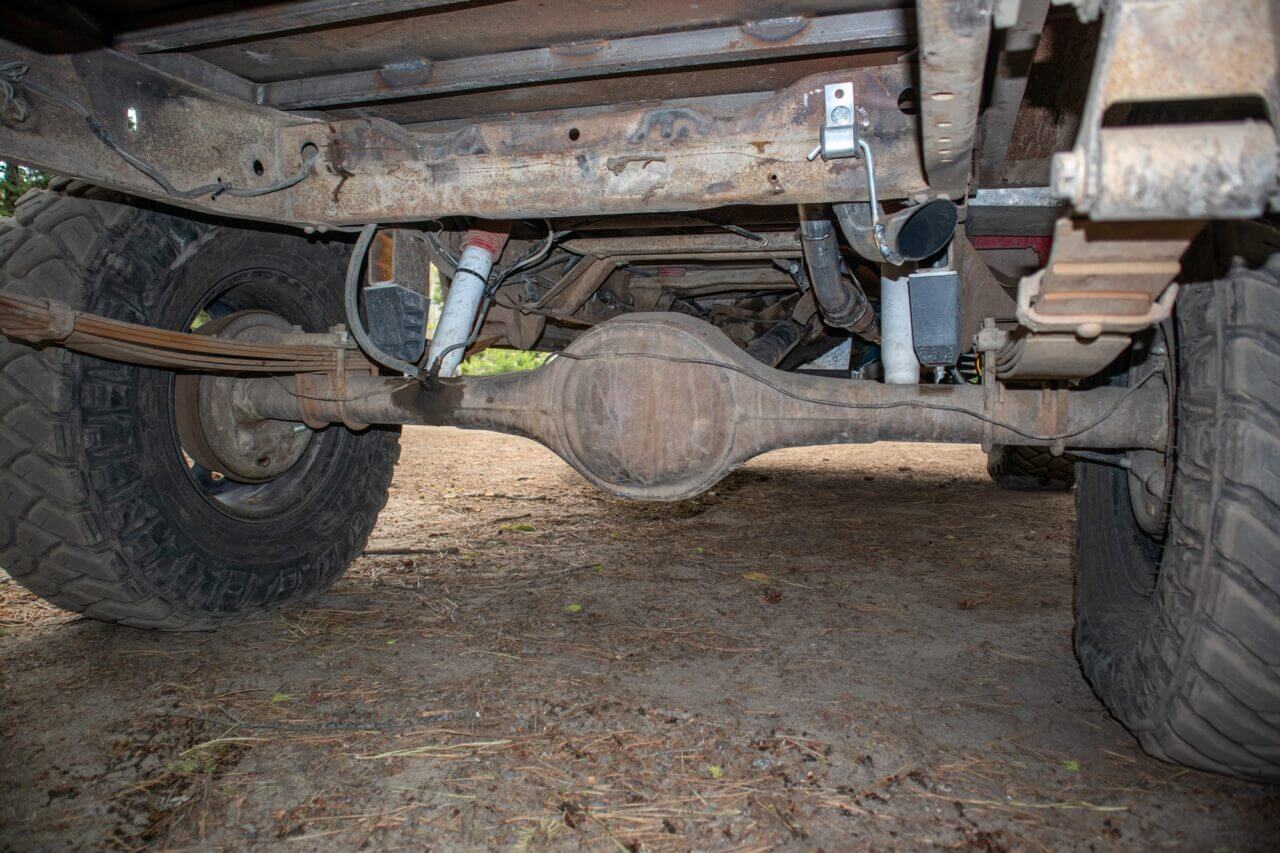
The rear axle is the original Ford 9-inch with 31-spline axle shafts and big bearing housing ends. Travis blew up the rear end on the Dusy Trail last year so it has been upgraded with 35-spline axle shafts, a Grizzly Locker, and 5.38 gears. The 9-inch axle is legendary for strength, the only downside is the low pinion that leaves the driveline vulnerable on longer wheelbase vehicles.
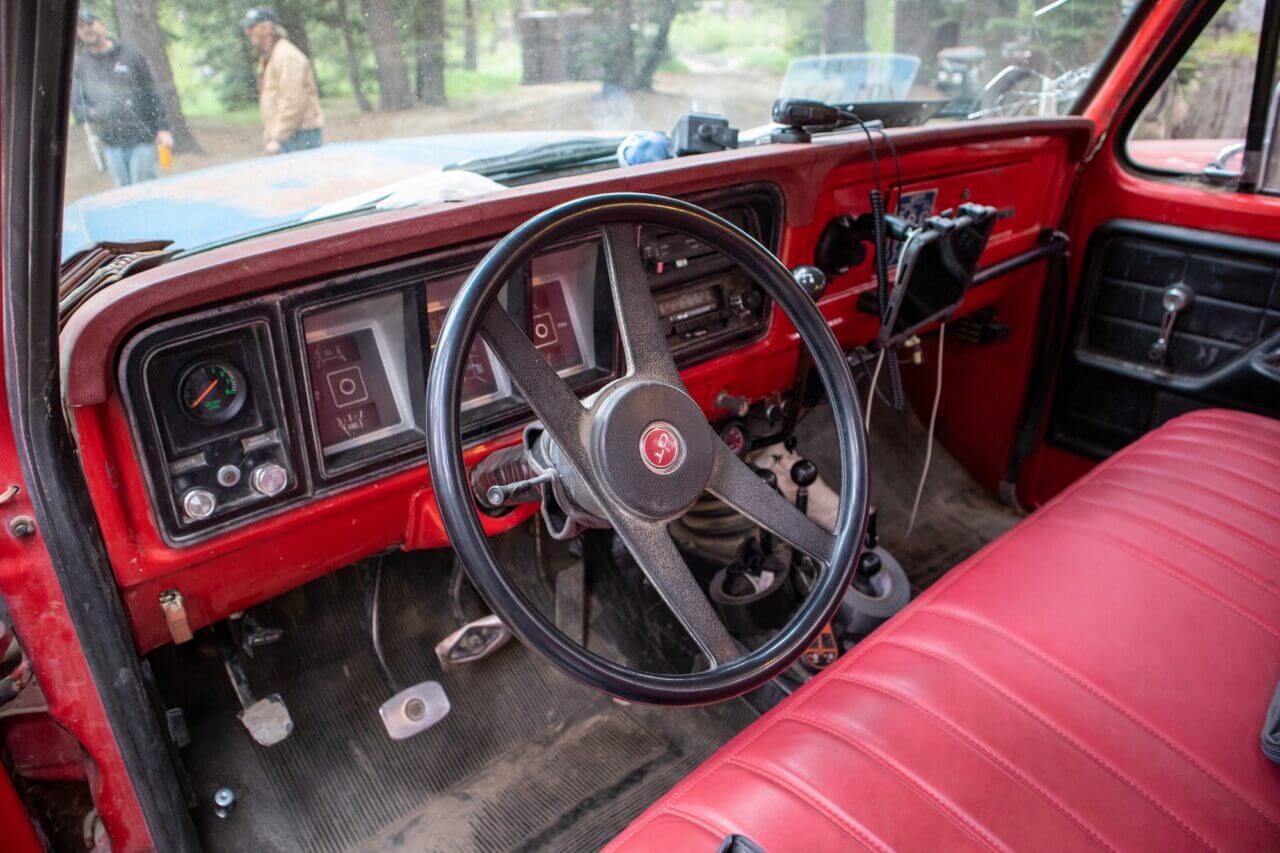
While the paint has succumbed to years in the desert, the interior of the truck is in surprisingly good condition. You can attribute that to the amount of metal and distinct lack of plastic used. The bench seat was reupholstered by Motor Missions of Las Vegas and comfortably fits three people… as long as the person in the middle doesn’t mind Travis rowing gears for the NP435 transmission and Off Road Design Doubler transfer cases.





2